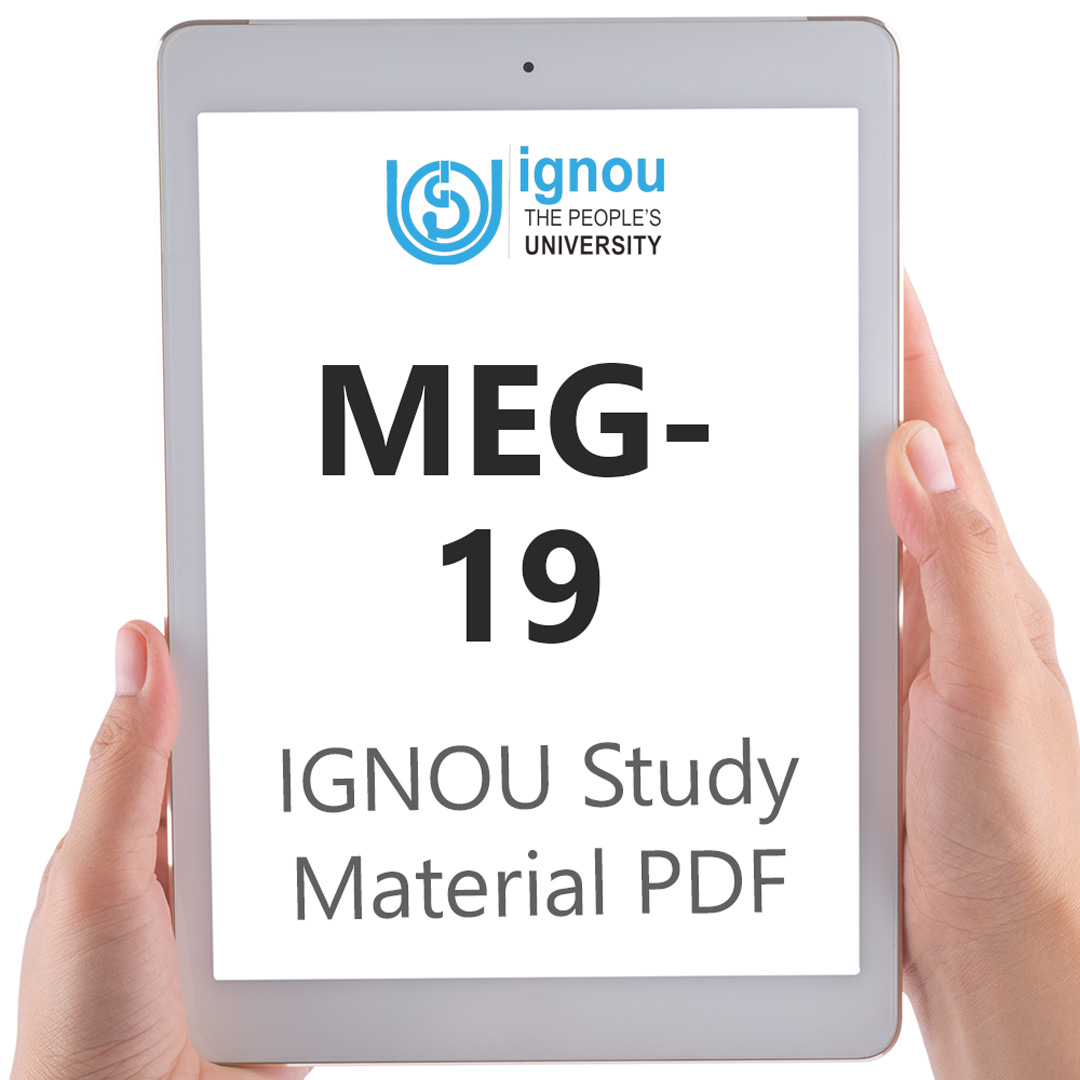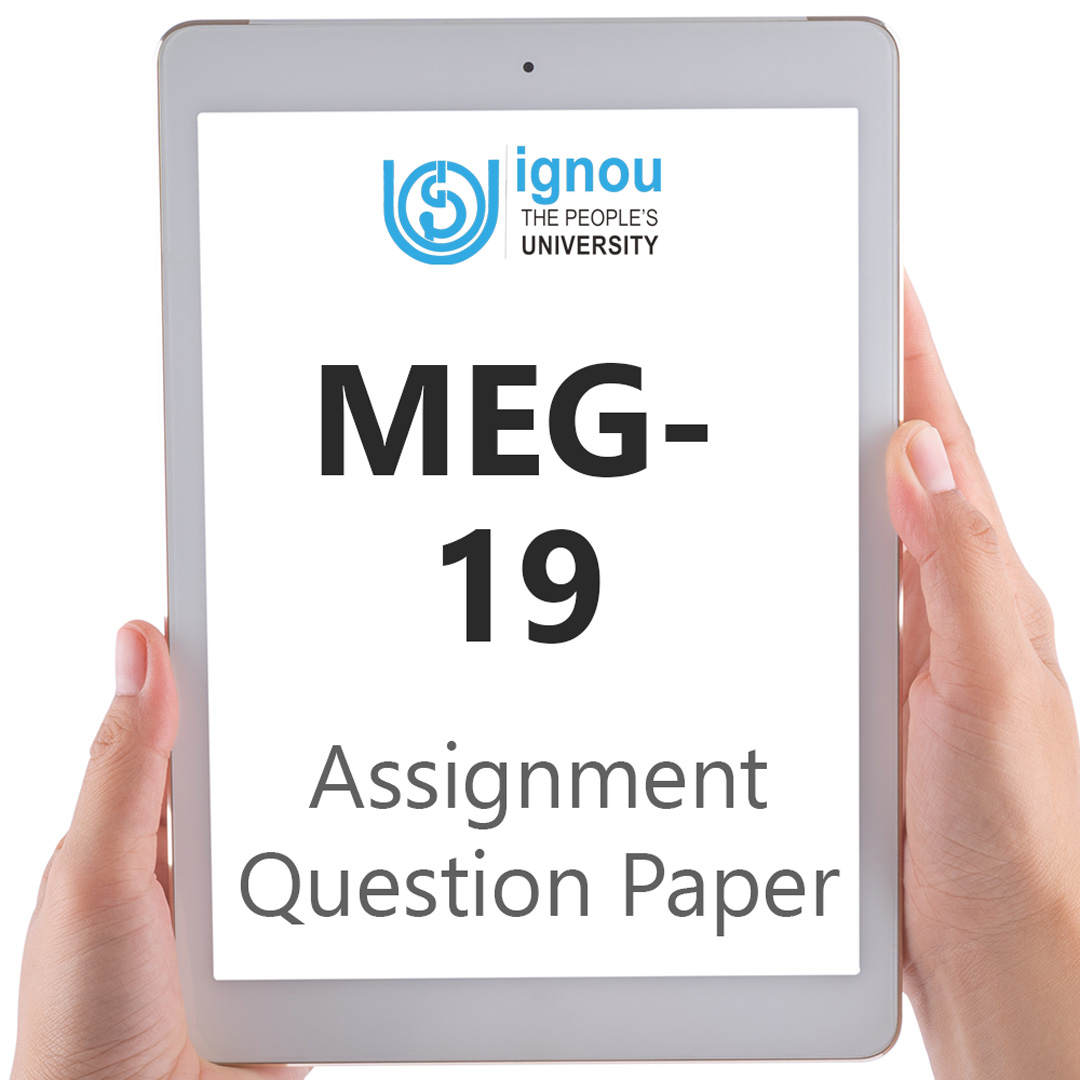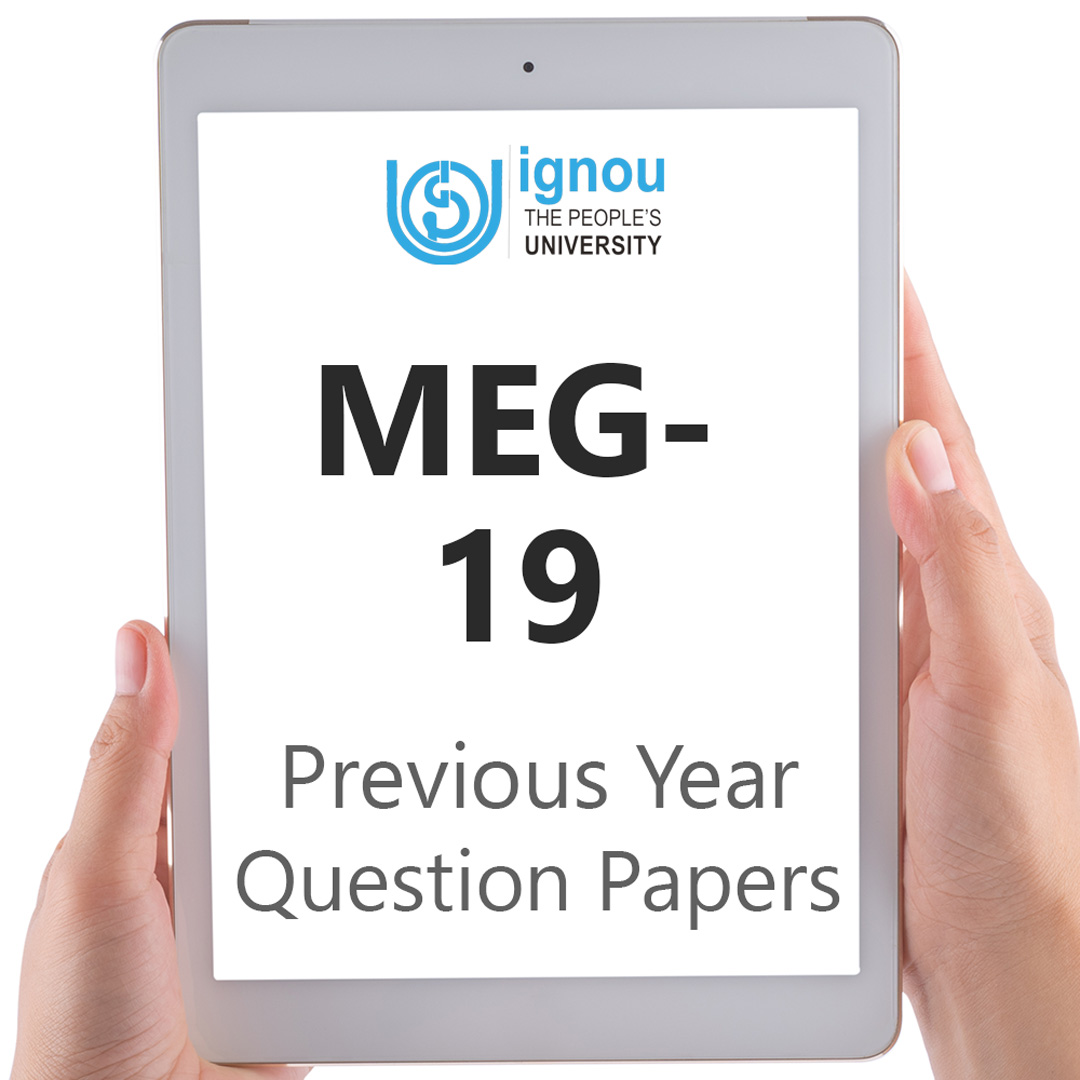If you are looking for MEG-19 IGNOU Solved Assignment solution for the subject Australian Novel, you have come to the right place. MEG-19 solution on this page applies to 2023-24 session students studying in MEG, PGDNOV, PGDNLEG courses of IGNOU.
MEG-19 Solved Assignment Solution by Gyaniversity
Assignment Code: MEG-19/TMA/2023-24
Course Code: MEG-19
Assignment Name: The Australian Novel
Year: 2023-2024
Verification Status: Verified by Professor
Q1) Consider The Tree of Man by Patrick White as a pioneer novel.
Ans) Patrick White's novel "The Tree of Man" is indeed a pioneering work of Australian literature and can be considered a pioneer novel for several reasons. Published in 1955, this novel is a seminal work that explores the Australian landscape, identity, and the human experience in a way that was groundbreaking for its time.
Exploration of the Australian Landscape: "The Tree of Man" is notable for its deep engagement with the Australian landscape. It vividly describes the natural environment, from the rugged bushland to the harsh climate, allowing readers to immerse themselves in the unique Australian setting. This emphasis on the landscape was pioneering in Australian literature and contributed to a sense of place and identity in the narrative.
Rural and Regional Focus: The novel departs from the urban-centric narratives often associated with early Australian literature. It explores the life of Stan and Amy Parker, a working-class couple living in a rural, isolated part of New South Wales. This rural focus was innovative for its time and highlighted the importance of regional experiences in Australian storytelling.
Complex Characters: "The Tree of Man" features deeply complex and multi-dimensional characters, particularly Stan Parker, the central figure. Stan's character undergoes significant development as he grapples with the challenges of rural life, family, and the changing world around him. The depth of character exploration was pioneering in Australian literature, where characters were often more archetypal.
Psychological Depth: Patrick White delves into the psychological depths of his characters, offering insights into their inner thoughts, fears, and desires. This psychological depth was a departure from earlier Australian literature, which often focused on external events and actions.
Themes of Isolation and Alienation: "The Tree of Man" explores themes of isolation and alienation, which were central to the Australian experience, particularly in remote rural areas. White's portrayal of the Parkers' solitude and their struggle to connect with each other and the world around them was a pioneering exploration of these themes.
Use of Symbolism: White employs symbolism throughout the novel, most notably in the recurring motif of the tree that Stan plants and nurtures over the years. The tree serves as a symbol of resilience, endurance, and the enduring human spirit. This use of symbolism added depth and complexity to the narrative.
Language and Style: Patrick White's prose style in "The Tree of Man" is distinctive and marked by its poetic and evocative language. His lyrical descriptions of the landscape and characters set a new standard for the use of language in Australian literature.
International Recognition: "The Tree of Man" brought international recognition to Australian literature. It won the inaugural Miles Franklin Literary Award in 1957 and was praised by critics and authors worldwide. This recognition helped establish Australian literature on the global literary stage.
Influence on Australian Literature: Patrick White's innovative approach to storytelling in "The Tree of Man" had a lasting impact on Australian literature. It encouraged subsequent generations of Australian writers to explore diverse landscapes, characters, and themes, contributing to the rich tapestry of Australian literary tradition.
Reflection of Post-War Australia: The novel reflects the post-World War II era in Australia, capturing the challenges and changes faced by a nation transitioning from the war years to a period of social and economic transformation. It provides valuable historical insights into this pivotal time in Australian history.
Q2) Explain the significance of the title of Yasmine Gooneratne’s novel A Change of Skies.
Ans) The title of Yasmine Gooneratne's novel "A Change of Skies" holds significant thematic and symbolic relevance within the context of the story. Published in 1991, this novel explores the experiences of an immigrant family from Sri Lanka (then Ceylon) as they relocate to Australia.
Symbolism of Skies: The word "skies" in the title symbolizes not only the literal change in geographic location from the Democratic Socialist Republic of Sri Lanka to Australia but also the broader idea of transformation, shifting perspectives, and new horizons. The skies represent the overarching atmosphere and environment in which the characters' lives unfold.
Immigration and Cultural Transition: The core theme of the novel revolves around immigration and the challenges of cultural transition. The change of skies signifies the physical journey undertaken by the characters from one country to another, as well as the cultural, emotional, and psychological adjustments they must make.
Reinvention and Adaptation: The change of skies also alludes to the opportunity for reinvention and adaptation that comes with immigration. The characters, particularly the protagonist, Saraswathi, have the chance to redefine their lives, aspirations, and identities in a new cultural context.
Freedom and Independence:
The new skies represent a sense of freedom and independence for the characters. In leaving behind the constraints and expectations of their homeland, they are exposed to new possibilities and a chance to shape their destinies according to their own desires.
Transformation and Growth: The novel chronicles the transformation and growth of the characters as they navigate the challenges of adapting to a new country and culture. The change of skies becomes a metaphor for the personal growth and development that occur over time.
Cultural Clash and Integration: The title also reflects the cultural clash and integration that are central to the immigrant experience. The characters must find a way to reconcile their Sri Lankan heritage with the Australian way of life, and this process is encapsulated in the changing skies that surround them.
Exploration of Identity: "A Change of Skies" delves into questions of identity, both individual and collective. The characters grapple with their sense of self as they straddle two cultures, and the title encapsulates this journey of self-discovery and redefinition.
Environmental Contrast: Beyond the metaphorical connotations, the title also highlights the stark environmental contrast between the tropical landscapes of the Democratic Socialist Republic of Sri Lanka and the vast, open skies of Australia. This contrast underscores the physical and geographical change that the characters undergo.
Reflection of Global Migration: The title resonates with the broader global theme of migration and the movement of people across borders. It serves as a microcosm of the larger phenomenon of international migration, highlighting the personal stories and challenges that individuals and families face when they change their skies.
Universality of the Immigrant Experience: “A Change of Skies" speaks to the universal aspects of the immigrant experience—the pursuit of a better life, the pursuit of dreams, and the navigation of the complexities of cultural adaptation. The title captures the essence of these universal themes.
Q3) “Kim Scott’s novel Benang is a polyphonic text.” Comment on this statement.
Ans) Kim Scott's novel "Benang: From the Heart" is indeed a polyphonic text, and this statement aptly characterizes the complexity and richness of the narrative. Published in 1999, the novel is a masterful exploration of Indigenous Australian history, identity, and cultural memory. To understand why "Benang" is considered polyphonic:
Multiple Voices: One of the most prominent features of a polyphonic text is the presence of multiple voices and perspectives. "Benang" weaves together the voices of several characters and narrators, both Indigenous and non-Indigenous, offering a diverse range of viewpoints and experiences.
Indigenous and Non-Indigenous Perspectives: The novel features Indigenous characters like Harley, Douglas, and Mamaarawuli, whose voices provide insights into the Indigenous experience, culture, and history. At the same time, it includes non-Indigenous characters like Voss and Veronica, whose perspectives offer a contrast and sometimes a critique of the dominant colonial narrative.
Intertextual Layers: "Benang" incorporates intertextual layers by drawing on various forms of storytelling, including Indigenous oral traditions, colonial records, personal diaries, and letters. These different narrative forms are interwoven throughout the novel, creating a multifaceted and polyphonic narrative.
Shifting Temporalities: The novel moves between different temporalities, blending the historical and the contemporary. This temporal complexity enhances the polyphonic nature of the text as it connects past injustices to present-day repercussions, highlighting the ongoing impact of colonization.
Language and Linguistic Diversity: Kim Scott incorporates Indigenous words, phrases, and linguistic features into the narrative, reflecting the richness and diversity of Indigenous languages. This linguistic diversity adds depth to the text and reinforces the polyphonic quality of the storytelling.
Multiple Narrative Threads: "Benang" weaves together multiple narrative threads, each representing a different facet of the overarching story. These threads often intersect and diverge, allowing readers to engage with a variety of interconnected stories and perspectives.
Oral Storytelling Tradition: The novel draws on the oral storytelling tradition of Indigenous cultures. This tradition involves the passing down of stories, knowledge, and cultural heritage through spoken narratives. By incorporating elements of this tradition, "Benang" embraces a polyphonic approach to storytelling.
Dialogues and Conversations: Throughout the novel, characters engage in dialogues and conversations that reveal their unique voices, beliefs, and experiences. These dialogues contribute to the polyphonic texture of the text, allowing readers to witness the collision and convergence of different worldviews.
Cultural Memory and Identity: "Benang" explores the themes of cultural memory and identity, with each character's perspective contributing to a broader understanding of the complexities of Indigenous identity in a post-colonial context. These varied voices enrich the narrative by presenting diverse aspects of this complex issue.
Reader Engagement: A polyphonic text like "Benang" invites readers to actively engage with the narrative, as they must navigate the multiple voices, perspectives, and narrative threads. This engagement allows readers to immerse themselves in the rich tapestry of the storytelling.
Q4) Discuss with suitable examples, how Peter Carey mingles ‘fiction’. with ‘historical accounts’ in his effort to arrive at a ‘true history’. of a social outlaw, in True History of the Kelly Gang.
Ans) Peter Carey's novel "True History of the Kelly Gang" is a masterful blend of fiction and historical accounts that seeks to construct a "true history" of the notorious Australian outlaw, Ned Kelly. Carey employs a unique narrative style that combines fictional elements with historical facts, creating a compelling and immersive portrayal of Kelly's life and the socio-political landscape of 19th-century Australia.
Epistolary Narrative: The novel is presented in the form of a series of journals and letters written by Ned Kelly himself. This epistolary style blurs the lines between fiction and history, as it gives voice to the outlaw, allowing readers to experience events from his perspective. While Ned Kelly did write a famous letter, Carey's use of this form expands upon it, imagining a more extensive record of Kelly's life.
Vernacular Language: Carey uses a vivid vernacular language that reflects the colloquial speech of the time and place. This choice adds authenticity to the narrative and immerses the reader in the historical setting. For example, Ned Kelly's use of Australian slang and expressions in his writings and dialogues contributes to the sense of time and place.
Personal Insights and Emotions: Through Ned Kelly's first-person narrative, Carey delves into the outlaw's inner thoughts, emotions, and personal reflections. Readers gain access to Kelly's psyche and come to understand his motivations and the socio-political factors that drove his actions. These insights add depth to the historical portrayal of the character.
Revisionist History: Carey's novel challenges traditional accounts of Ned Kelly's life and presents a revisionist history that reinterprets his actions and character. By offering an alternative perspective, the novel engages in a form of historical revisionism that questions established historical narratives.
Incorporation of Primary Sources: While the novel is a work of fiction, Carey incorporates and references primary sources, such as historical documents and newspapers, to ground the narrative in historical authenticity. For example, excerpts from historical documents and newspaper reports are interwoven into the text to provide context and contrast with Ned Kelly's version of events.
Imagined Dialogues and Interactions: The novel features imagined dialogues and interactions between Ned Kelly and other historical figures, such as his encounters with the police and prominent individuals of the time. These interactions are based on historical records but are fictionalized to create a coherent narrative.
Exploration of Socio-Political Themes: Carey uses the novel as a platform to explore socio-political themes of oppression, injustice, and class struggle in 19th-century Australia. While these themes are historically grounded, they are woven into the narrative through Kelly's subjective experiences and perceptions, offering a unique perspective on the era.
Mythic and Symbolic Elements: The novel incorporates mythic and symbolic elements that contribute to its fictionalized historical account. The image of the iconic Ned Kelly armour, for instance, becomes a symbol of resistance and defiance against colonial authority.
Ambiguity and Complexity: Carey's narrative is marked by ambiguity and complexity, as it presents multiple layers of truth and interpretation. By blurring the lines between fact and fiction, the novel challenges readers to critically engage with the story and consider the complexities of Ned Kelly's life and the broader historical context.
Q5) Write short notes of around 200 words each on the following:
Q5. a) Trace the development of the novel in nineteenth century Australia, and critically evaluate its themes and concerns.
Ans) The development of the novel in nineteenth-century Australia was marked by the emergence of a distinct literary tradition that reflected the unique socio-cultural and historical context of the country.
Colonial Experience: Many novels of the time explored the challenges and experiences of early European settlers and convicts in the Australian colonies. Works like Marcus Clarke's "For the Term of His Natural Life" depicted the harsh conditions of penal colonies and the struggle for survival.
Exploration of Landscape: Australian novels often celebrated the country's vast and diverse landscape. Writers like Henry Lawson and Barbara Baynton portrayed the bush and outback as central elements of the Australian identity.
Identity and Nationhood: As Australia moved toward nationhood, novels grappled with questions of identity and belonging. Henry Handel Richardson's "The Fortunes of Richard Mahony" examined the complexities of individual and national identity.
Social Realism: The novels of Joseph Furphy and Catherine Helen Spence delved into social issues such as class, gender, and labour, reflecting the changing social dynamics of the time.
Indigenous Perspectives: While rare, some novels, like David Unaipon's "Legendary Tales of the Australian Aborigines," offered early insights into Indigenous Australian culture and perspectives.
Bush Mythology: Writers like Banjo Paterson and Henry Lawson contributed to the development of the Australian bush mythology, celebrating the virtues of the "bushman,” and capturing the spirit of rural life.
Coming of Age: Towards the end of the century, novels like Miles Franklin's "My Brilliant Career" explored themes of female independence and the challenges faced by young women seeking self-determination.
Q5. b) Examine how Keneally engages with the complex nature of righteousness and virtue through the character Oskar Schindler in Schindler’s Ark.
Ans) In the novel "Schindler's Ark," written by Thomas Keneally, the main character, Oskar Schindler, provides a gripping investigation of the multifaceted nature of morality and virtue. In the beginning of the book, Schindler is depicted as a self-centered businessperson; yet, as the storey progresses, he goes through a significant change.
In the beginning, Schindler's actions are motivated by personal gain and profit as he exploits the labour of Jewish workers in his factory. In other words, he is motivated to make money. Having been exposed to the horrors of the Holocaust and the plight of the Jewish population, he eventually has a conversion of conscience as a result of these experiences. This shift challenges conventional concepts of morality and virtue, as Schindler begins to jeopardise both his own life and his fortune in order to save as many Jewish lives as he possibly can.
The moral difficulty that Schindler's actions reflect is exemplified by his character. Even though he may have started out with self-serving intents, his sense of duty and empathy for the Jewish workers has grown with time, and as a result, he feels compelled to act in a moral manner. His lifesaving work stands in stark contrast to the barbaric and terrible activities carried out by the Nazis.





